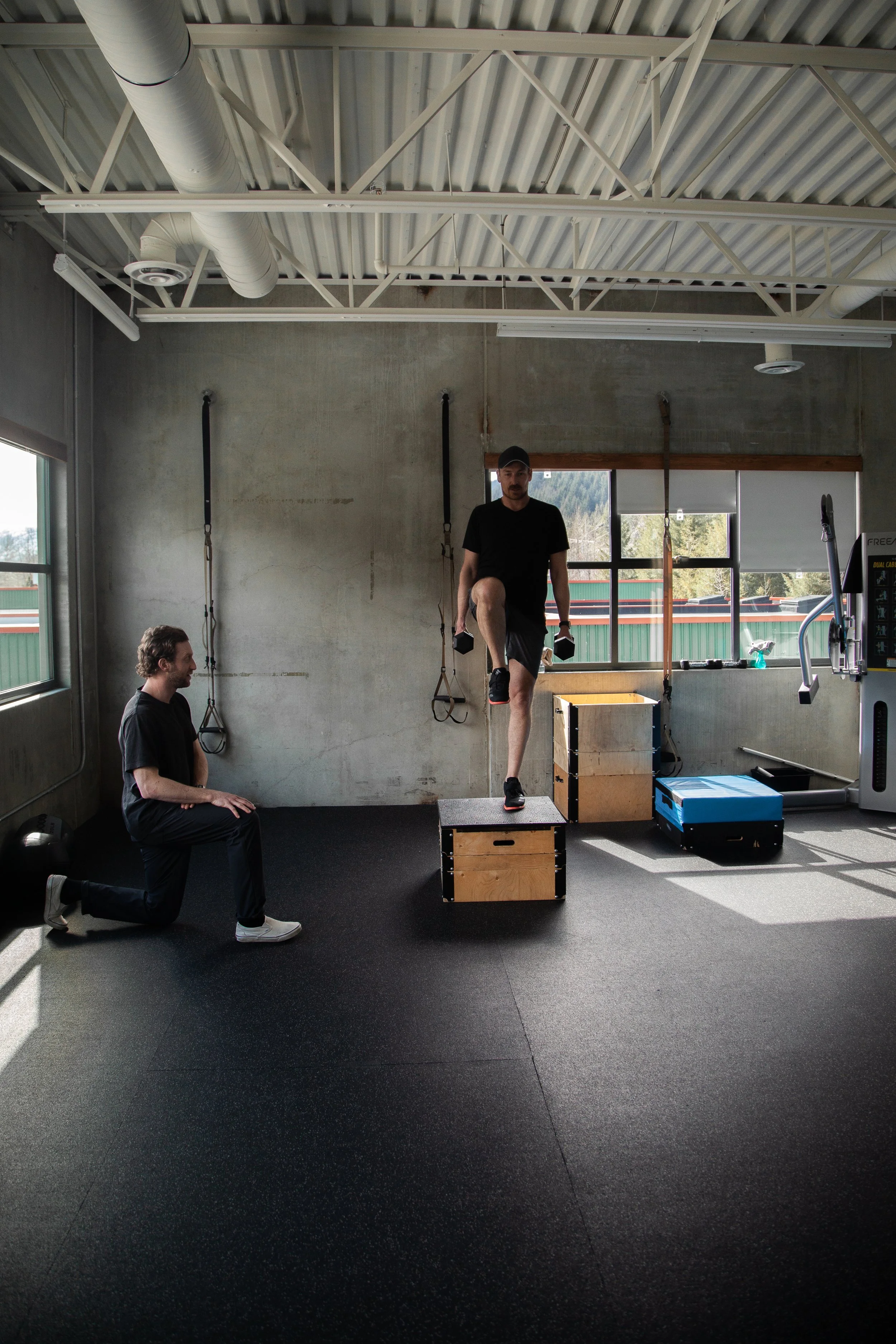Training Load Management for Multi-Sport Enthusiasts:
A Numbers Game
Season Transition Time
As we close the book on another summer in the Sea to Sky corridor, many of you may be reflecting on how your activities have been going this year. How have you been doing on the bike? Did you get to those hikes you wanted to do? How are your fitness levels? You may also be starting to think about the upcoming winter. Are you ready to ski/snowboard? How will you feel on the skin track? What kind of gym routine do you envision moving forward?
There are a lot of variables influencing your daily, monthly and yearly training: schedules, interests, weather, social influences and many more. The purpose of this blog post is to IGNORE all of these variables…because (for better or for worse) your body does not care about them!
So, what DOES your body care about when it comes to fitness?
Training Load
The catch-all concept that we will discuss in this post is Training Load.
Training Load can have a few different meanings but in general terms it is the total amount of exercise that you are getting expressed over a set period of time. In 2022, there are many different ways to quantify training load. Our collective obsession with data analytics and technology has led to the development of a multitude of products seeking to provide you with the most cutting-edge information about your training. The growth of the fitness tracking sector has made useful metrics much easier to assess for those armed with these devices, but no matter what is strapped to your wrist it is still important to understand the basic concepts around training load.
Time For Some Math
One method for quantifying training load is to use the concept of Session Rating of Perceived Exertion (Session RPE).
Session RPE = Session Duration X Session Intensity (based on subjective report)
This calculation depends on you rating an exercise session on a scale such as the one pictured here from easy to difficult. This subjective rating is then multiplied by the duration of the exercise session, usually in minutes.
For example, let’s say you go on a casual 20-minute walk with your dog that you rate 2/10 for effort:
(20 min) X (2) = 40 Session RPE
Now let’s take another example, where you go for a 2 hour bike ride that you rate a 7/10 effort:
(120 min) X (7) = 840 Session RPE
You now have a standardized way to compare these two very different activities. In the next section you will see how to use this concept to assess training load over a longer period of time than just single sessions.
Time for A Bit More Math
Session RPE’s can be used over the long term to assess whether you are training too little or too much based on your fitness level. If we take the above examples as two separate bouts of exercise in the same day for this individual, we see that
Dog Walk + Bike Ride = Daily Training Load
40 + 840 = 880
If you record your activity in this way over the long term you can get a good picture of what training load your body is accustomed to managing. For example,
Take a month where you have an average daily training load of 500.
This week you decide to add in a daily new activity on top of your normal routine.
After you do your calculations, say this brings your average training load for the week to 750.
Your average training load for the week is 50% greater than it was the preceding month. This is a big jump and you might be stiff, sore or possibly even overtrained leading to feeling run-down.
Acute increases in activity should not exceed ~30%, to avoid overtraining.
Now let’s take a look at the flip side:
Take a month where you have an average daily training load of 500.
This week you are busy with work and don’t get the time to train that you wanted.
After you do your calculations, say this brings your average training load for the week to 250.
Your average training load for the week is 50% less than it was the preceding month. This is a large decrease, and it may be important to ease back into your routine gradually to avoid injury.
Acute decreases in activity exceeding ~20% should be noted as possible detraining can occur.
Summary
In this post we have discussed the general concepts around managing training load. As your training fluctuates, your fitness levels follow. Generally, when you seek to improve your fitness, you are trying to gradually increase the training load that your body can tolerate. There is a delay between your training stimulus and the body’s adaptation, so it is important to be patient with the process! This concept applies to every type of physical activity.
Keep these ideas in mind especially when seasons change, and you transition in your daily activities. These transition times may require you to temporarily reduce certain training sessions to allow successful re-adaptation to the activity you are picking back up!



